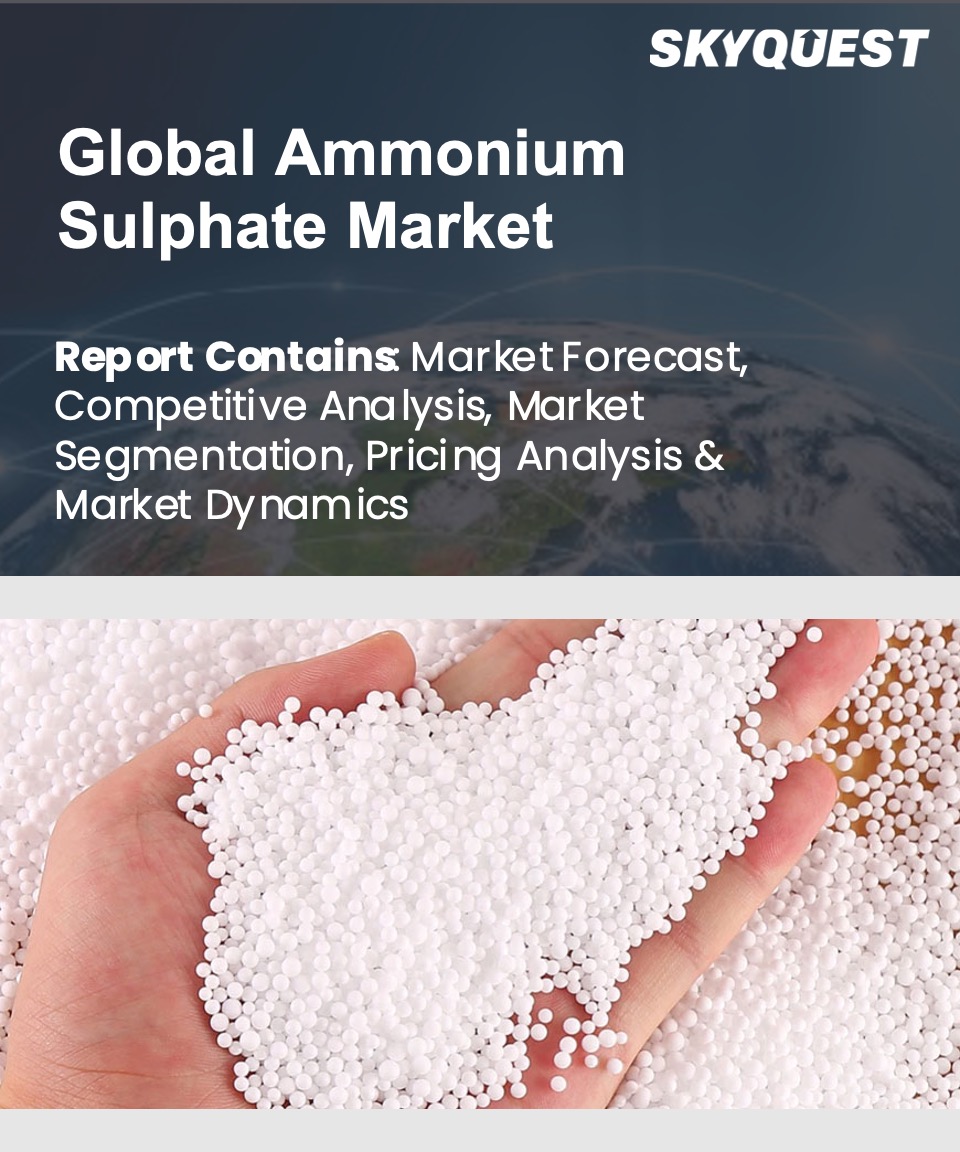
Report ID: SQMIG15A2356

Report ID:
SQMIG15A2356 |
Region:
Global |
Published Date: February, 2024
Pages:
242
|
Tables:
64 |
Figures:
75
Ammonium Sulphate Market Driver
Ammonium Sulphate Market Restraint
Our industry expert will work with you to provide you with customized data in a short amount of time.
REQUEST FREE CUSTOMIZATIONThe fertilizer segment holds the largest share in terms of application in the ammonium sulfate market.
The ammonium sulfate market will grow at a compound annual growth rate (CAGR) of 6.7% from 2022 to 2030.
Ammonium Sulphate Market size was valued at USD 3.82 billion in 2019 and is poised to grow from USD 3.96 billion in 2023 to USD 5.23 billion by 2031, growing at a CAGR of 3.4% in the forecast period (2024-2031).
Want to customize this report? This report can be personalized according to your needs. Our analysts and industry experts will work directly with you to understand your requirements and provide you with customized data in a short amount of time. We offer $1000 worth of FREE customization at the time of purchase.

Report ID: SQMIG15A2356